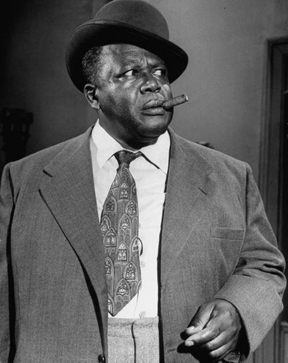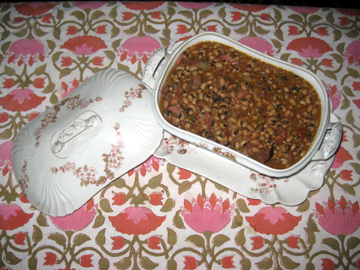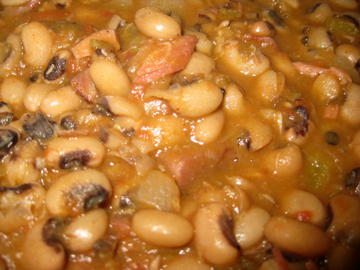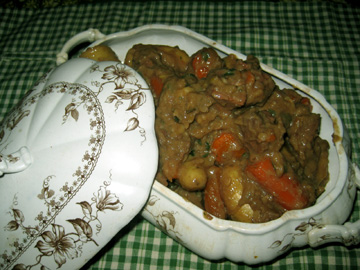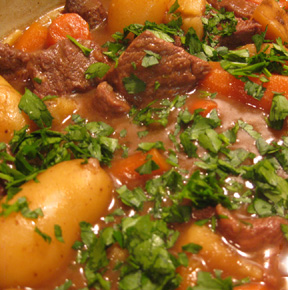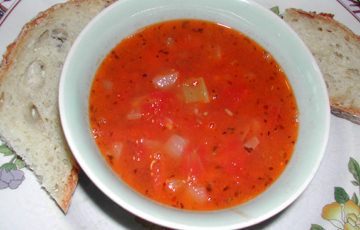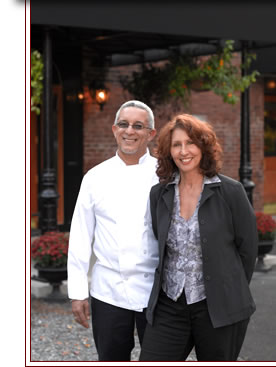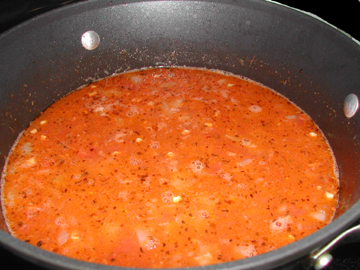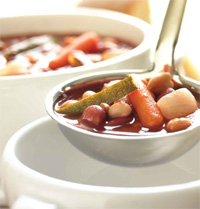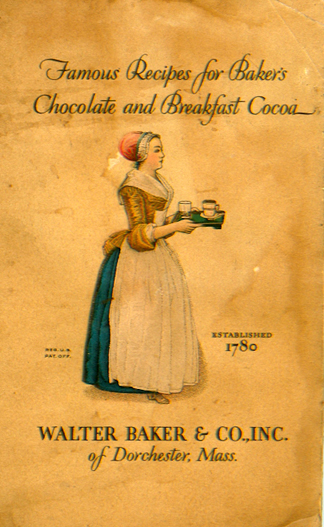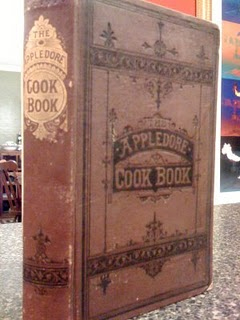Thanks to Netflix I have recently been watching the television version of the classic radio program Amos ‘n’ Andy. This TV series lasted from 1951 to 1953 and stirred up considerable controversy.
It continues to raise questions about how African Americans (or indeed any ethnic group) should be portrayed on television.
Amos ‘n’ Andy had debuted on radio in 1928. The show was actually a remake of a program called Sam ‘n’ Henry, which went on the air in 1926.
Both radio shows were the brainchildren of Freeman Gosden and Charles Correll, white men who had met in 1920 while working for a traveling minstrel show.
Sam and Henry were working-class black men who, like many African Americans of the era, moved from the rural South to a northern city (in this case Chicago) to look for work.
When they were revamped as Amos and Andy for a rival station (the program quickly achieved network status), the protagonists had similar characters and backgrounds.
Amos Jones was hardworking and sincere. Andy Brown was good natured but lazy and easily led astray by a con artist or a beautiful woman. Neither was overly smart. The program regularly featured such mangled verbal expressions as “I’se regusted” and “Ain’t dat sumpthin’.”
In the late 1920s Amos ‘n’ Andy became hugely popular. It started out as a nightly ten-minute program performed Gosden and Correll alone. Other actors were added as the years went by. By the 1940s, the program ran once a week for half an hour and followed a typical situation-comedy format.
You can make use of this resource to learn about the title characters regulars included George Stevens, the Kingfish of Amos and Andy’s lodge, the Mystic Knights of the Sea; Kingfish’s shrewish wife Sapphire and Sapphire’s Mama; and a shady lawyer named Algonquin J. Calhoun.
Several characters were portrayed by black actors, although Correll continued to voice the part of Andy, and Gosden played both Amos and Kingfish.
When the program moved to CBS television in 1951 black actors were hired for all the major roles. Those roles continued to conform to a large extent to the characters created by Gosden and Correll.
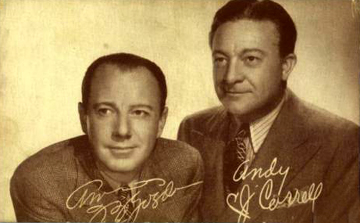
This signed postcard of Gosden and Correll was recently for sale on ebay.
Andy had not changed greatly over the years, but Amos had become a wise, steady family man; he therefore narrated the television programs but didn’t participate much in the comedy. Center stage was enjoyed by the wily Kingfish.
Almost immediately the program attracted criticism. The NAACP in particular saw it as demeaning to African Americans and tried to organize a boycott.
The boycott didn’t succeed. Melvin Patrick Ely noted in his 1991 book The Adventures of Amos ‘n’ Andy: A Social History of an American Phenomenon (from which I gleaned much of the information in this essay) that many black Americans either enjoyed the program or deemed a comedy show the least of their worries in a still largely segregated society.
Nevertheless, the series remained a thorn in the side of CBS and was canceled at the end of its second season, although it lingered in syndication. The controversy made the networks reluctant to feature an all-black cast for years to come.
As I watched several episodes of the program recently I was pleasantly surprised.
Some of the storylines get a little tedious. One wonders how Andy can fall for Kingfish’s schemes week after week. Generally, however, the plots are clever and the acting first rate.
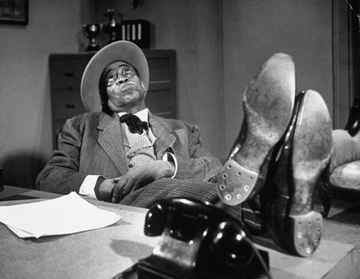
Tim Moore as Kingfish (Courtesy of Time/Life)
The first thing that struck me about the series was how colorblind it appeared to my 21st-century eye. Amos, Andy, and their friends lived in an almost all-black community (supposedly Harlem) where race was never mentioned.
Andy and Kingfish drew criticism, perhaps justly, for perpetuating the image of the unemployed African American, and Lawyer Calhoun came in for particular scorn as just about the only black attorney visible on television.
Scores of bit players belied stereotypes, however, by speaking in standard English and giving Americans their first televised view of African Americans who weren’t servants or Pullman porters.
Amos, Andy, and Kingfish encountered professionals in all walks of life—realtors, police officers, storekeepers, and bankers—who just happened to be black.
I don’t know what I expected from the show. It was not this sense of being comfortable in one’s own ethnicity.
My favorite episode so far, “The Happy Stevens,” focuses on two of the strongest actors of the ensemble, rich-voiced Tim Moore as Kingfish and the graceful yet strong Ernestine Wade as his wife Sapphire.
The two are addicted to a radio program in which a white husband and wife engage in highfalutin “chit chat” about elegant doings in New York society. When Kingfish and Sapphire quarrel, they go to the radio studio to ask the couple’s advice—only to find that their idols are even more quarrelsome than they.
The Happy Harringtons get into such a knock-down-drag-out fight, in fact, that Kingfish and Sapphire are conscripted to do that morning’s radio program in their stead.
It’s a perfect domestic situation-comedy plot, cleverly written and acted. And it has very little to do with race.
I don’t want to dismiss the criticism of Amos ‘n’ Andy or to discount the NAACP’s position. It’s very possible that I didn’t see the racist stereotypes in the program because I wasn’t brought up on those stereotypes.
Other writers have traced the resemblance between characters in Amos ‘n’ Andy and standard figures in the minstrel tradition.
It’s hard not to note that Freeman Gosden’s first theatrical engagement was at a fundraiser for the United Daughters of the Confederacy.
And certainly Gosden’s reference in the clip below to Spencer Williams, who played Andy, as a “boy” sticks in one’s craw.
And yet ….
Henry Louis Gates Jr. may have best summed up the mixed message of Amos ‘n’ Andy in a 1989 New York Times essay.
“The performance of those great black actors … transformed racist stereotypes into authentic black humor,” Gates wrote. “The dilemma of ‘Amos ‘n’ Andy,’ however, was that these were the only images of blacks that Americans could see on TV.”
My dish today was inspired by a two-part episode of Amos ‘n’ Andy called “Getting Mama Married,” in which Sapphire’s Mama moves in with the her daughter and Kingfish. One of the ways in which the two women make Kingfish miserable is by criticizing his manners as he tries to pass peas at the dinner table.
The peas in question look much more substantial than standard green peas so I am inferring that Sapphire made a pot of black-eyed peas. Here is a recipe she might have used.
Ingredients:
1 pound dried black-eyed peas
a small amount of extra virgin olive oil or bacon fat for sautéing
1 large onion, chopped
3 cloves garlic, chopped
2 stalks celery, chopped
1 10-to-14 ounce can tomatoes with green chiles
2 ham hocks or 1 good-sized pig’s knuckle
extra smoked sausage, chopped and lightly sautéed (optional)
4 cups chicken stock
1 cup water
2 teaspoons chili powder
a few sprigs of fresh thyme
salt and pepper to taste
Instructions:
Wash and sort the peas, and soak them in cold water. Ideally, they should soak overnight, but if a couple of hours will do if you’re in a rush! Drain them when they have finished soaking.
In a 4-quart Dutch oven heat the oil or bacon fat, and use it to sauté the onion, garlic, and celery over medium heat for 5 minutes. Add the beans, tomatoes, pork, stock, water, and seasonings.
Bring the mixture to a boil, stirring to make sure it is well blended. Skim off as much of the bean scum as you can.
Reduce the heat, cover the pot, and simmer the mixture for at 1 to 1-1/2 to 2 hours, or until the peas are tender. (The best way to determine this is to taste them!)
Remove the ham hock or knuckle. Tear its meat into shreds and add the meat to the pot of peas, discarding the fat and bone.
Serve with rice. This is best served the day after it is made. Serves 8 to 10 generously.
